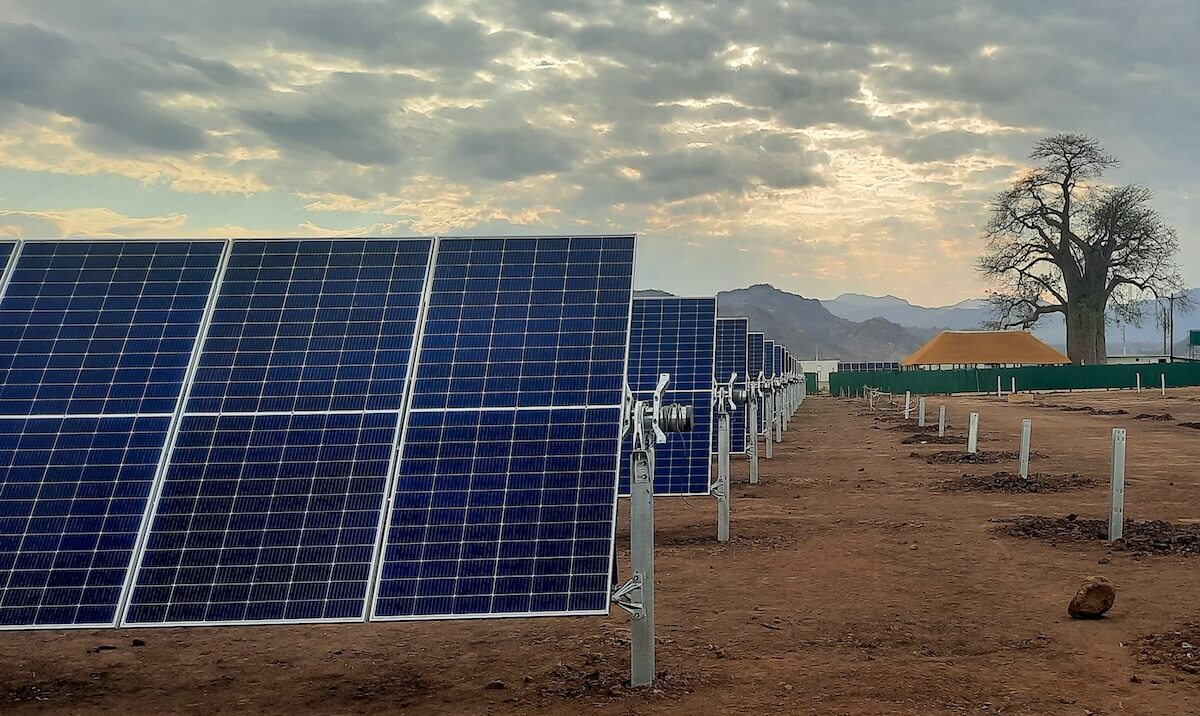Greetings, ImpactAlpha readers!
#Featured: Returns on Investment podcast
The Blue Haven Initiative opens up. The Blue Haven Initiative was one of the earliest family offices to commit 100% of its assets to impact. At more than $500 million, it’s one of the biggest to make that commitment. And it’s one of the first to share its challenges publicly.
In this edition of the Returns on Investment podcast, the principals, Liesel Pritzker Simmons and Ian Simmons, open up with ImpactAlpha editor and CEO David Bank about their investment philosophies, their favorite investments, and the myths about impact investing that they’d like to bust. One myth they want to puncture: Investments with ‘market-rate returns’ have less impact. “To broad brush all market-rate investing as having no impact is a bit heavy handed,” Liesel told ImpactAlpha. “I’m kind of a big-tent person in the impact-investing space. I think there’s room for all of these investments.”
Listen in as David Bank interviews Liesel Pritzker Simmons and Ian Simmons on the latest Returns on Investment podcast, on ImpactAlpha:
The $500 million Blue Haven Initiative, unplugged (podcast)
#Dealflow: Follow the Money
EIB finances Italian hospital — and seeds a community impact fund. The European Investment Bank, the EU’s long-term lender, is making a €29 million ($34 million) low-cost loan to develop a new hospital facility in Treviso, Italy, near Venice. Cost-savings from the cheaper financing — about €1.8 million — will go into an impact fund to invest in education and health innovation and research for the local community. The hospital loan is the first from the EIB to also seed an impact fund. It was issued via the European Fund for Strategic Investments, a facility created by the European Commission to finance projects relevant to the “Juncker Plan.” The plan, developed in response to widespread cuts in public infrastructure spending after the 2008 recession, calls for €500 billion in infrastructure investment to catalyze new public and private support for transit, energy, broadband and telecoms, as well as schools and hospitals. In June, the fund invested €10 million into a social-impact bond in Finland aimed at integrating refugees into the Finnish labor market.
Reinvestment Fund backs solar project for Philadelphia Navy Yard. Reinvestment Fund, a Philadelphia-based community-development finance institution (and GSG Honors awardee), is providing $1.1 million in debt to construct a two-phase rooftop-solar project at Philadelphia’s Navy Yard. It’s being touted as the first community solar project in Pennsylvania, and one of only 25 in the U.S. The former navel base and shipyard turned business park in South Philly is home to more than 150 companies and the workplace of more than 12,000 people. Power generated from the installation will feed into the Navy Yard’s existing microgrid and be used to power businesses based on the1,200 acre site. The first phase, for 440 kilowatts, is under construction and is expected to supply 0.5% of the Navy Yard’s energy demand; the second 310-kilowatt installation is planned for 2018. Reinvestment Fund is issuing loans via its Sustainable Development Fund to SolarSense, the project’s developer.
We asked, you answered: A roundup of inclusive ag #dealflow. Yesterday we introduced a special report on inclusive agriculture with the Initiative for Smallholder Finance (see, “Smallholder farmers are investable”) and called on readers to share smallholder ag deals we might have missed. A peek at our inbox: Novastar’s $80 million venture fund for East African entrepreneurs has invested in iProcure’s Series A round. iProcure is an online and mobile platform that connects small farmers with equipment, fertilizer and other suppliers. EM3, a pay-per-use provider of farm services in India, raised $10 million from the London-based Global Innovation Fund and Aspada, a Soros Economic Development Fund-backed investment firm. EM3 helps farmers with everything from planting preparation to post-harvest field management. Innovare Advisors has launched a $25 million loan fund to help small and medium-sized agribusinesses in Africa purchase equipment on a “lease-to-own” basis. Are we missing your inclusive ag deals? Please send to [email protected].
Smallholder farmers are investable
See all of ImpactAlpha’s recent #dealflow.
#Signals: Ahead of the Curve
What do enterprises think about impact investors’ demand for data?Earlier this week, we learned that patient-capital investor Acumen asks the enterprises it invests in, “What data can we help you collect?” Now comes a deeper look at the impact management practices of impact investor-backed enterprises. The researchers, from German consulting firm Roots of Impact (the report was commissioned by the Donor Committee on Enterprise Development), interviewed 24 agriculture and energy enterprises of varying sizes in Latin America, Southeast Asia and East Africa. Some key findings:
- Impact businesses rarely draw on commonly used databases or standards when developing their metrics. Instead, most develop their own indicators as they build their business.
- Digital and mobile tech methods of generating data are now prevalent(used by 14 of the 24 enterprises). For example, Farm from a Box, with headquarters in San Francisco, has equipped its “farm in a shipping container” with Wi-Fi and an Internet of Things system of sensors to collect data helpful in optimizing water and energy use.
- Enterprises say they collect impact data mainly to satisfy investors.But they are finding internal benefits as well. “Our first responsibility is to create income to pay the salaries,” said one interviewee. “But when this is achieved, impact is a strong focus. And it also helps us to raise additional funds and to grow.”
Robert Rubinstein called the sustainable-finance trend before you did. What do they say about the shoulders of giants? Many impact investing initiatives are hitting their ten-year anniversary this year. Meanwhile, Robert Rubinstein’s Triple Bottom Line Investing (or TBLI) conference, the grand old lady of sustainable-finance events, is turning 20 and celebrating in Stockholm on September 28 and 19. Spanning both environmental, social and governance, or ESG, and impact investing, global experts from AXA, BlueOrange and Schmitt Family Foundation will be on hand to talk about liquid and illiquid assets to decarbonize portfolios, or, for example, how to invest in Sustainable Development Goal No 16: Peace and Justice. One cool thing: TBLI pushes the boundaries of transparency by publishing its list of attendees. ImpactAlpha is a proud partner of the event. Register here.
#2030: Long-termism
Turning on the (LED) street lights for cities of the future. According to the World Bank, five billion people — or 60% of the world’s population — will live in cities by 2050, and the overall demand for lighting will be 80% higher in 2030 than it was in 2005. Municipal street lighting will form a large part of this demand and will pose a growing burden on city budgets. But without adequate street lighting, people spend less time outside after dark, which stymies economic growth. Studies have shown that public lighting can reduce crime by up to 20% and traffic accidents by up to 35%.
What’s a power-strapped city to do? Well, for one, replace traditional lighting with high-efficiency LED street lighting. Not only do LEDs use up to 60% less energy than traditional bulbs, they lower maintenance costs because they last at least four times longer than other street-lighting technologies. In the U.S. alone, replacing outdoor lighting with LEDs can save $6 billion annually and reduce carbon emissions by the equivalent of taking 8.5 million cars off the roads for a year.
But capital costs are preventing the switch from old bulbs to new. A new report highlights successful strategies for switching to LED street lighting. For example, in Visakhapatnam, India, the Ministry of Power set up a “super” energy service company, or ESCO, to lower LED costs through a bulk procurement program. Guadalajara, Mexico, introduced lease-to-own LED public lighting, with private financing and a repayment guarantee from the state government. These studies demonstrate that there’s no one-size-fits-all model for managing the high upfront cost of implementing LED tech. But once it is in place, the long-term benefits outshine the costs.
Onward! Please send any news and comments to [email protected].











